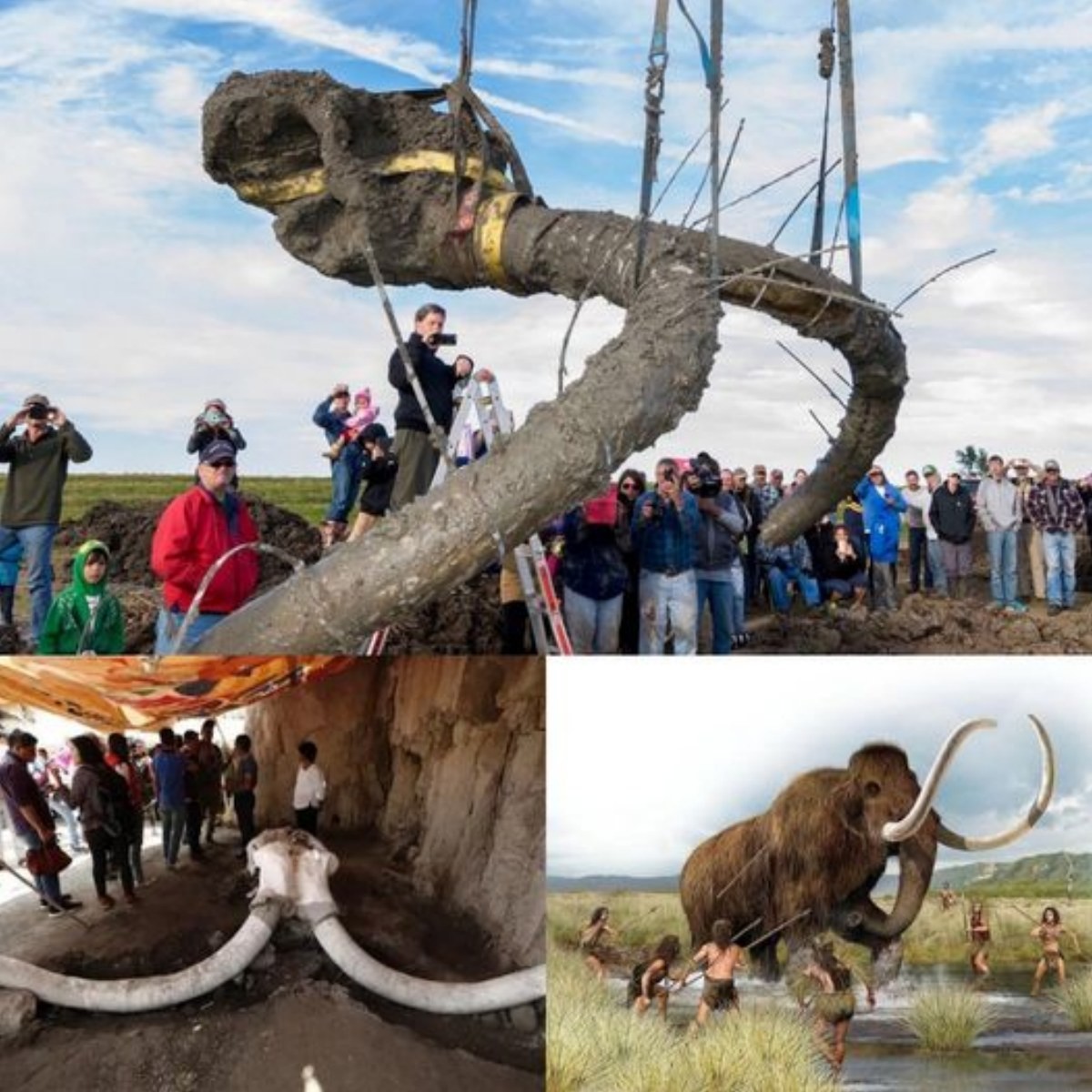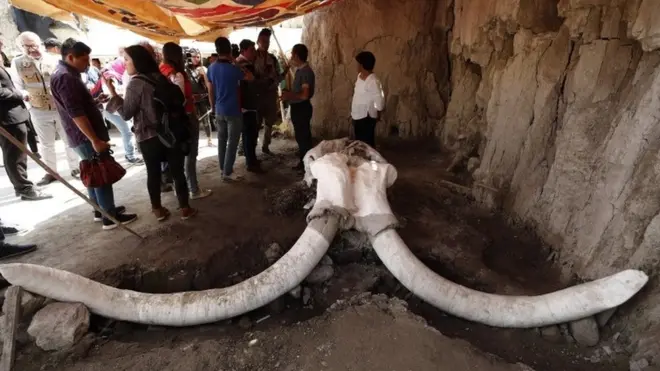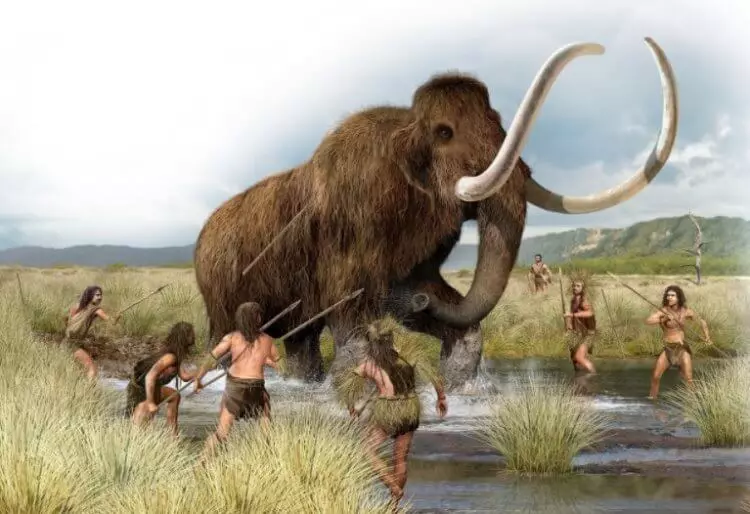Shocking Discovery: Ancient Human Remnants Found Embedded in Woolly Mammoth Remains
Although it’s been buried for thousands of years, the partial skeleton of a woolly mammoth discovered this week in Lima Township shows that the animal probably ended up on a Native American’s dinner plate.

“It’s too early to tell how it died but the skeleton showed signs of butchering,” said Professor Dan Fisher of the Museum of Paleontology at the University of Michigan.
“It was an adult male, 40 to 50 years of age, and stood probably 10 feet tall at the shoulder.”
The remains were found on a soy bean farm owned by James Bristle, in an area near Chelsea, about 10 miles southwest of Ann Arbor. At first, Bristle thought it might be an old fence post.
Instead it turned out to be about 20 percent of a woolly mammoth, including the skull, jaw, vertebrae and ribs, that died between 11,000 and 15,000 years ago.
Experts believe the discovery, including a small stone flake that may have been used as a cutting tool, might provide clues about the lives of early humans in the region.
The site holds “excellent evidence of human activity,” Fisher said. “We think that humans were here and may have butchered and stashed the meat so that they could come back later for it.”

Mammoths and mastodons — another elephant-like prehistoric creature — once roamed North America before disappearing around 11,700 years ago. Over the years, the remains of about 300 mastodons and 30 mammoths have been recovered in Michigan, Fisher said.
“We get one or two calls like this a year, but most of them are mastodons,” said Fisher, who also said that most of the mammoth finds in Michigan aren’t as complete as the skeleton uncovered by the UM team.
According to experts, storing mammoth meat in ponds for later usage was common for this region.
Evidence supporting that idea includes three basketball-sized boulders recovered next to the mammoth remains. The boulders may have been used to anchor the carcass in a pond.
The first step toward confirming this hypothesis would be to wash the bones and look for cut marks that indicate butchering.

The first bones were uncovered on Wednesday when Bristle was installing drainage pipe at a low spot in a wheat field surrounded by soybeans. A backhoe digging a trench uncovered a roughly 3-foot-long bone that was later identified as part of a mammoth pelvis.
“We didn’t know what it was, but we knew it was certainly a lot bigger than a cow bone,” said Bristle, who admitted that the discovery was both exciting and disruptive.
But he said he’s confident that he made the right decision.
“When my 5-year-old grandson came over and saw the pelvis, he just stood there with his jaw wide open and stared. He was in awe,” Bristle said. “So I think this was the right thing to do.”
Bristle gave the UM team one day to recover the remains. They worked from early morning to nearly sunset, with the help of James Bollinger of Bollinger Sanitation and Excavating in Chelsea, who donated his time.
Bollinger brought in equipment to help uncover the ancient creature.

“The farmer that owns the field was putting in drainage tiles with a friend on Wednesday when they hit a large bone,” Bollinger said. “They knew right away it wasn’t from the kind of animal they were used to. I volunteered to dig on Thursday, which is when Dan Fisher showed up with a bunch of grad students.”
According to Bollinger, the work was exciting but tedious.
“I’d uncover an inch at a time and then they’d examine that area,” Bollinger said. “We kept digging and found the top of the skull, a ton of ribs, teeth and neck vertebrae. Then we uncovered both tusks. The tusks, with the curve, had to be eight feet long.”
One thing they didn’t find were the legs or feet of the mammoth, according to Fisher.
“But it was probably about six to seven tons in weight,” Fisher said.
“We’d need further analysis to determine if it was killed by humans, and by and by humans were here as well.”
According to Fisher, Michigan at that time was tundralike after the glacier covering the state under up to a mile of ice receded north.
“They melted back,” Fisher said. “Michigan was thought to be ice-free by 16,000 to 18,000 years ago. It took time for vegetation to spread back over the landscape.”
To date there are only 10 similar sites in Michigan where a significant portion of a woolly mammoth skeleton was discovered.
“We need a more detailed analysis of the skeleton to determine how this animal lived, its health and what its life was like,” Fisher said. “But this was a big and mature animal when it died.”
For Bollinger, it was the thrill of a lifetime.
“I don’t feel like ‘Indiana Jones’ but I’ve been digging for 45 years and never found anything like that,” Bollinger said.
Then how about “Indiana Bones?”






